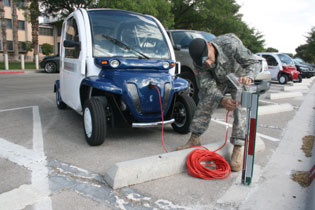U.S. Army Corps of Engineers: Center for the Advancement of Sustainability Innovations
Our “future readiness rests on the actions we take today to use resources efficiently, protect our training areas, employ technology and improve quality of life. While the Army has already made great strides in these areas, the execution of this Army Sustainability Campaign Plan will further improve our ability to meet operational requirements today and in the coming decades,” states the U.S. Army in its 2010 Campaign Plan introduction.
While many Federal agencies have intensified their sustainability focus within the past year due in part to Executive Order (EO) 13514, Federal Leadership in Environmental, Energy, and Economic Performance, U.S. Army leadership stated its commitment early on through its 2004 Army Strategy for the Environment: Sustain the Mission, Secure the Future. This strategy provides for a long-range vision relying on the triple bottom line plus of mission, community, environment and economic benefit. The 2010 Army Sustainability Campaign Plan furthers this vision by providing a commitment to advance sustainability in all Army operations.
However, pulling together the various elements in the strategy’s vision can be both challenging and complex, which is why Army leaders asked the U.S. Army Corps of Engineers (USACE) to create a center to address the gap between strategy goals and the many steps needed to achieve them. “The Center for the Advancement of Sustainability Innovations’ (CASI) purpose is to fill that space. Our goal is to help Army organizations identify what they could be doing to move along the path to becoming more sustainable,” said William D. Goran, CASI director.
Being more sustainable is critical to the Corps of Engineers, especially in light of its vision and campaign plan. The USACE Vision is “to be a GREAT engineering force of highly disciplined people working with our partners through disciplined thought and action to deliver innovative and sustainable solutions to the Nation’s engineering challenges.” Goal three of the USACE Campaign Plan requires the Corps “to deliver innovative, resilient, sustainable solutions to the Armed Forces and the Nation.” By executing its mission, CASI helps the Corps achieve both.
Making Sense for the Nation
Launched in 2006, CASI functions as a network hub, linking expertise within the U.S. Army Engineer Research and Development Center (ERDC) with numerous center partners, including the Center for Sustainable Design at the University of Illinois, the National Defense Center for Energy and Environment, the National Renewable Energy Laboratory, the Corps of Engineers Huntsville Installation Center of Expertise and many others. Physically located at ERDC’s Construction Engineering Research Laboratory (CERL) in Champaign, Ill., CASI’s reach is worldwide. It provides practical, “how to” solutions and sustainable best practices that Department of Defense (DoD) entities can use toward their sustainability journey.
With the October 2009 release of EO 13514, CASI has become active in helping USACE, Army and DoD address the Order’s many challenges. For instance, it formulated a team involving experts from ERDC and the Corps’ Institute for Water Resources (IWR) to assist USACE Headquarters in the development of its Strategic Sustainability Performance Plan (SSPP), which is required for all Federal agencies under the EO.
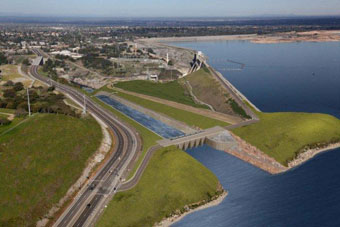
Photo Credit: U.S. Army Sacramento District
The Corps Plan brings together the organization’s many independent sustainability actions in a focused, comprehensive way. It sets 10 performance goals, such as reducing greenhouse gas emissions, engaging in regional and local sustainable planning efforts, improving water use efficiency and management, improving sustainable acquisition practices and implementing innovative sustainable practices – goals that almost mirror CASI’s technology focus areas.
Meeting the Corps of Engineers’ SSPP goals requires approaching them from a command perspective. Maj. Gen. Meredith W.B. Temple, USACE Deputy Commanding General, described the Corps’ sustainability program as a command responsibility that follows two lines of operations – looking at internal efforts to ensure that “we do what we say, and say what we do” and an external one that looks at Corps services to its customers through military programs, civil works, research and development to help them meet their sustainability goals.
“We’re in this for the long haul,” Temple said. “It makes sense for USACE, our Nation and our customers.”
Analyzing Topics While Developing Tools
In addition to providing assistance on how to achieve sustainability goals, the CASI team is helping with responses to greenhouse gas (GHG) inventory requirements by conducting emissions studies at both military bases and Corps civil works project sites. The team has developed tools and web training to help organizations with GHG reporting, to plan for GHG emissions reductions, and to help conserve energy and water.
During this past fiscal year, CASI forged a new partnership with the Army Installation Management Command’s Strategic Planning Division to identify emerging technologies and issues, and to examine their potential impacts on installations. The team devised a protocol for selecting and analyzing topics, with the first three identified as: (1) evolving commercial fleet vehicles, (2) energy security in light of emerging energy technologies, and (3) building information modeling – all areas that will help Army installations meet future sustainability goals.
In addition, the Army Environmental Policy Institute (AEPI) has relied on CASI to develop white papers to frame topics for further investigation and to provide review of Army sustainability strategies and plans, said John Fittipaldi, an AEPI senior fellow. For instance, during the past year results of water studies, which began as national Army installation watershed vulnerability screenings, were released in ERDC technical reports. These studies developed into regional water budgets to forecast long term water supply and demand in specific regions containing Army installations.
Fittipaldi continued: “But it’s not just AEPI that uses CASI. The organization is a vehicle to help the Army in achieving sustainability. CASI provides consultants – advisers who provide input to strategy – who help installations and major commands advance and make progress in meeting sustainability goals. They provide the Army with the in-house expertise it needs when it comes to sustainability issues. It’s great that we have them to draw on.”
Identifying Focus Areas & Evaluating Impacts
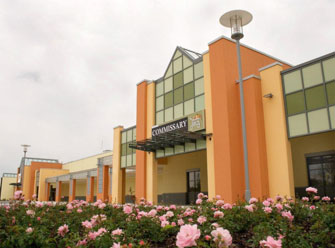
Photo Credit: U.S. Army Corps of Engineers photo
In 2011 CASI will be leading AEPI’s “Green Dividend Study” to compare upfront costs of Army involvement in U.S. Green Building Council’s Leadership in Energy and Environmental Design (LEED) Silver, Gold and Platinum Certification programs with payback rates of return. “We want to quantify the costs and see what the payback is – see what types of dividends we’re getting,” explained Fittipaldi.
Goran continued: “An important consideration for CASI study teams is to identify and to understand the linkages across systems. For example, even our green technologies have impacts; so, we attempt to anticipate these impacts before problems surface.
“Last year CASI conducted a study on the impacts of various renewable energy technologies. In April 2010 we published ‘Tradeoffs for Renewable Energy Projects, Mission, Planning and Environmental Considerations.’ This report (available online at: https://casi.erdc.usace.army.mil/focusareas/sfmilops/?contentRegion=Item&id=55557) discusses several constraints to locating large-scale renewable energy projects, as well as the potential mission and environmental consequences of these projects. It recommends actions for defense organizations to address these issues while also aggressively pursuing DoD’s renewable energy goals of 25 percent by 2025.”
CASI has established 10 focus areas, which Goran describes as “bins for planning suites of projects and for bringing together groups of experts. They also indicate the explicit topical areas where CASI has cobbled together expertise from within and beyond ERDC. As the sustainability challenges of the U.S. military change, these technology focus areas will also change.”
The 10 current CASI focus areas are:
- Anticipating Future Issues and Opportunities
- Sustainability Approaches, Measures and Knowledge Management
- Sustainable Regional Planning
- Sustainable Energy Solutions
- Sustainable Facilities and Infrastructure
- Sustainable Water Resources
- Sustainable Natural Infrastructure
- Sustainable Forward Military Operations
- Climate Change
- Green Remediation and Reuse
Addressing Legacy Contamination
The 10th focus area, Green Remediation and Reuse, recently was added in response to interests and challenges facing the military as it addresses legacy contamination across the nation’s restoration sites. Green and sustainable practices are those that potentially decrease the “environmental footprint” of a remedial project, defined as the impacts on environmental media and society that are a direct or indirect consequence of performing the remedial action. CASI is developing a decision framework to incorporate green/sustainable practices into USACE remediation projects (http://www.environmental.usace.army.mil/corpguide.htm).
“Some of our current approaches are energy and water intensive. Green remediation helps project managers identify less resource demanding technologies or integrate renewable energy sources into their remediation solutions,” Goran said.
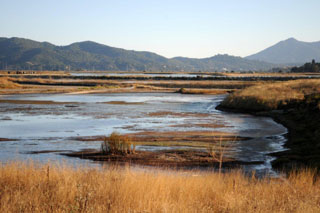
Photo Credit: Carlos Lazo (U.S. Army Corps of Engineers Sacramento District)
The Corps of Engineers is actively participating in an Army Green and Sustainable Remediation Study to: consider and incorporate green and sustainable remediation practices into Army environmental remediation projects; determine the effectiveness of those practices incorporated; calculate cost impacts of incorporating green and sustainable remediation practices; and provide procedures by which effective practices can be identified, considered, implemented and documented by project teams working on Army sites.
This study is using the SiteWise™ Green and Sustainable Remediation Tool, developed jointly by the Corps of Engineers, the Army, the Navy and Battelle, Inc. It allows quantification and comparison of project activities on a number of GSR metrics (energy use, greenhouse gas emissions, priority criteria pollutant emissions, water use and worker accident and fatality risks). The information then is used, along with other environmental remediation criteria, to make project decisions that include GSR considerations. The SiteWise™ tool is publicly available at: www.ert2.org/t2gsrportal/tools.aspx.
Following August 2001 DoD GSR policy, the Corps is striving to incorporate green and sustainable remediation practices “when and where it makes sense.” So far, the Corps’ Formerly Used Defense Sites (FUDS) program has put several green remediation techniques to use at cleanup sites. At the Spring Valley project in northwest Washington, D.C., phytoremediation is helping to clean arsenic from the soil, and wind and solar sources are powering cleanup efforts at the former Nebraska Ordnance Plant and the former Blaine Naval Ammunition Depot. At the former Nebraska Ordnance Plant in Mead, Neb., the wind turbines are paying additional benefits because they not only supply about 30 percent of the power needed to run a groundwater recirculation well, but the treated water is being used to irrigate nearby crops.
Incorporating a Culture Change
During the past 10 years, the Corps has implemented the principles of sustainable design and development in all engineering and construction activities to minimize waste disposal and use of precious resources, to encourage recycling and to enhance energy efficiency while permitting use of environmentally friendly and less harmful materials. USACE also established the Sustainable Design and Development Directory of Expertise (SDD DX) at its Savannah District in conjunction with CASI. Working in tandem, these two initiatives are providing technical expertise, research, sustainable design and development planning, construction support and a sustainable knowledge environment that benefit not only the Corps but the entire Army as well.
In 2010, the SDD DX developed a training course on Sustainability and LEED to provide practical, hands-on training on the dynamic body of requirements now being applied to military construction projects. Upon completing the course, trainees can successfully implement sustainable design and LEED in projects from master planning and initial project planning through construction closeout and beyond. So far 150 Corps employees have completed the training.
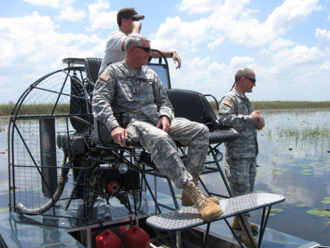
Photo Credit: Eric Bush (U.S. Army Corps of Engineers Jacksonville District)
In a welcome message to the training course, Chief of Engineers Lt. Gen. Robert Van Antwerp noted that, as the world’s premier engineering organization and the Nation’s environmental engineer, the Corps’ job is to rise to and exceed the challenges of increasing expectations for performance in energy and sustainability by incorporating the very best in environmental stewardship in all its processes and products.
“I am confident you will take what you learn here back home to help advance USACE’s commitment to provide the very best in sustainable engineering,” he said.
In 2009, the U.S. Green Building Council recognized the Army with its Leadership Award for efforts to adopt LEED Silver as the Army standard for all new military construction. The Army’s adoption of LEED has led to a revolution in the facility acquisition process and has far-reaching impact on the multi-billion dollar annual military construction program both in the United States and at overseas installations.
Reducing FOB Vulnerabilities
“Since its inception, one of CASI’s main areas of focus has been forward operating bases (FOB). Reducing energy and water requirements, as well as waste generation, for these base camps is critical to reduce the vulnerable logistics demands (e.g., long lines of supply trucks) to support the Army’s forward operations,” Goran said.
In 2010, CASI teams conducted studies on the baseline design requirements for water, energy, waste and base camp operations at forward operating bases of varying scale. These studies will help the Army select appropriate technologies to improve current operations and will provide the baseline needed to help shape research into the next generation of forward facilities.
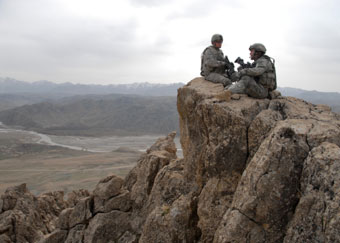
U.S. Army photo by Staff Sergeant Adam Mancini
Another project during this past year that has applicability for forward operating bases is the SilentCamp™ project for the 249th Engineer Battalion (Prime Power). The term, coined by ERDC-CERL researchers, describes a system concept where a diesel generator is coupled with an electrolyzer, hydrogen storage system and a fuel cell to form an integrated package to silently power loads at forward base camps. Because the diesel generators deployed in the field are typically lightly loaded, the efficiency of the generators is very low. By feeding excess power from the generators to an electrolyzer, the generators run at higher efficiency with improved operation (less maintenance). The electrolyzer in turn splits water into hydrogen and oxygen, and the hydrogen can be stored and used in a fuel cell to power loads.
SilentCamp™ has been endorsed by the 249th Engineer Battalion, which deploys 750 kW and larger generators in the field.
This project is demonstrating the effectiveness of using hydrogen energy storage as a means of assuring energy security and tactical advantage at forward operating bases. The prototype system was installed in May 2010 at ERDC-CERL to test the SilentCamp™ concept and to demonstrate the fuel cell-electrolyzer-diesel generator hybrid concept. The hardware includes a 5 kW fuel cell system that operates with a four-hour discharge cycle daily of hydrogen, a high pressure electrolyzer capable of producing 40 SCF/hr of hydrogen with output pressure from the electrolyzer 2400psig and a 30 k2 tactical gen-set as the primary power source for the electrolyzer.
This year CASI has initiated, as part of the Army’s research program, a research effort to create a “virtual forward operating base.” This initiative seeks to scale down solutions developed for U.S. military installations that integrate energy, water, waste, security and operations to a deployable version for base camps. This virtual base will be used for engineering design, equipment testing and training for Soldiers and civilians.
As these projects mature, CASI will continue to bring its research and development capabilities to bear in search of more innovative sustainability initiatives to benefit the military, its missions, the community and the environment.
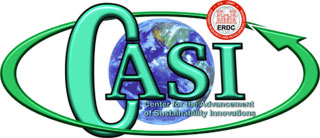 |
More information on CASI is available on its website at https://casi.erdc.usace.army.mil. |
|---|











